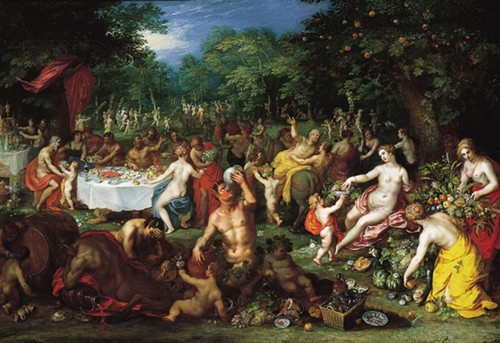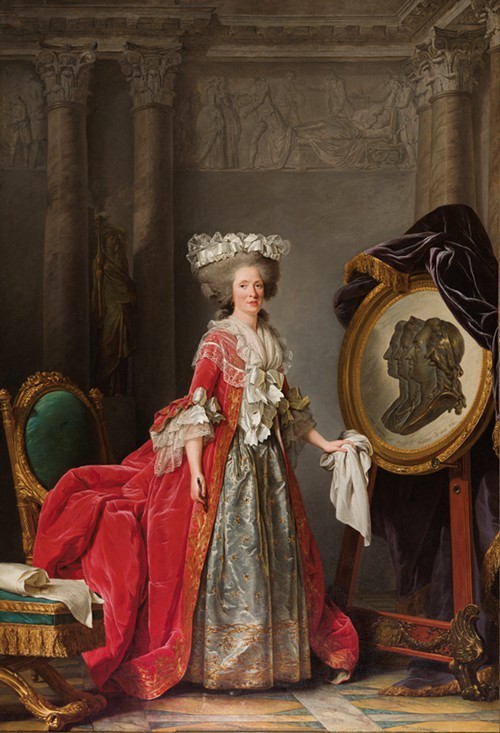
- Collection of Speed Art Museum, Louisville, KY
- Jan Brueghel the Elder and Hendrikvan BalenI, A Bacchanal, about 1608-1616.
Yesterday marked the official beginning of the Dixon Gallery and Gardens’ ambitious showing of master paintings from the distinctly dramatic and stylized Baroque and Neoclassical periods in European art. A great turnout came to hear Ruth Cloudman, Chief Curator of the Speed Art Museum in Louisville, Kentucky, speak about art in the seventeenth and eighteenth centuries, when the arts flourished in Europe amidst war, revolution, and the relentless tides of change. The exhibition comes courtesy of the Speed’s permanent collection, on display at the Dixon until April 15th.
The oldest and largest fine art museum in Kentucky, the Speed will also showcase 55 pieces from the Dixon’s permanent collection of Impressionist and Post-Impressionist paintings along with about 30 other works from their own collection and various Kentucky collections, beginning in February. The Dixon’s executive director, Kevin Sharp, will lead an excursion of dedicated art lovers to Louisville in the spring to take in the exhibition.
The museum opened in 1927, founded in 1925 by Hattie Bishop Speed as a memorial to her husband, James Breckinridge Speed, a prominent Louisville businessman and philanthropist. Although the Speed Museum’s first paintings were mainly 19th century European and Western works, the museum began seriously collecting old master paintings in the 1950s, mostly thanks to a bequest that made possible the purchase of works such as a piece by William Hogarth, an English painter and social critic who has been credited with pioneering Western sequential art.
When Franklin Page became the museum’s second director in 1963, he and key patrons had a meeting of the minds, and together made a concerted effort to acquire master paintings at a very high level. Page was also gifted at engaging supporters to buy works of art for the museum, such as the wonderful oil sketch by Peter Paul Rubens, and the magnificent, enormous court portrait by Adélaïde Labille-Guiard.
Then in 1977, a remarkable outpouring of civic pride and ambition from corporations, the state of Kentucky, numerous individuals, and literally, schoolchildren who donated their pennies, led to the purchase of the museum’s prized Rembrandt portrait.
But the Speed has become much more than an old master collection. The museum touts exquisite 19th century American and European works, such as a portrait by James Peal, a painting by Claude Monet, and a collection of decorative arts including tapestries and silver. The Speed is also currently readying construction on a new addition to house its contemporary collection and special exhibitions.
We can’t wait to see what else they have to offer from this exciting exchange. Pick up this week’s copy of the Flyer to learn more about “Rembrandt, Rubens, and the Golden Age of Painting.”

- Collection of Speed Art Museum, Louisville, KY
- Adelaide Labille-Guiard, Portrait of Madame Adelaide, about 1787.